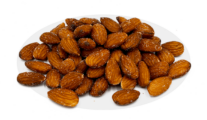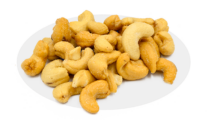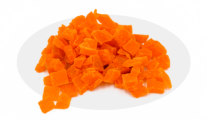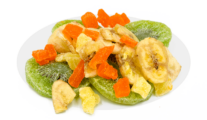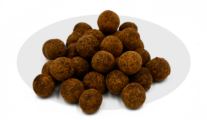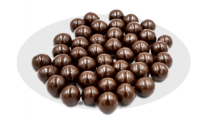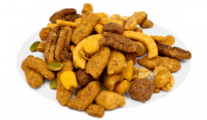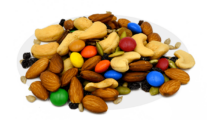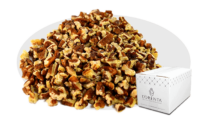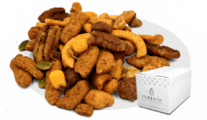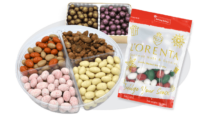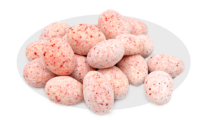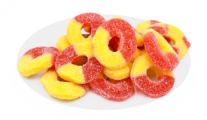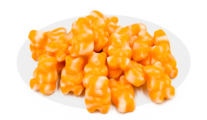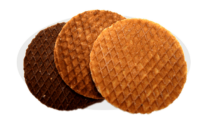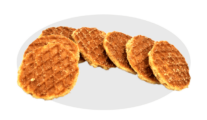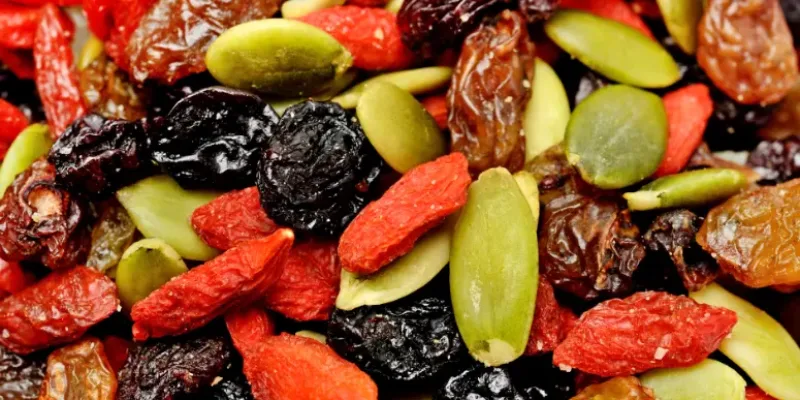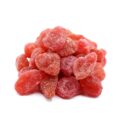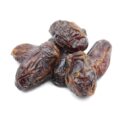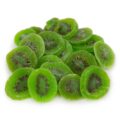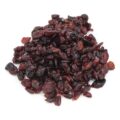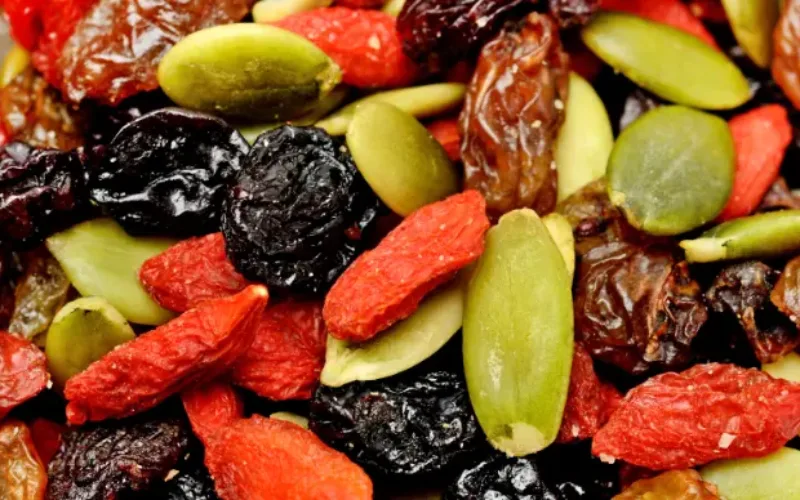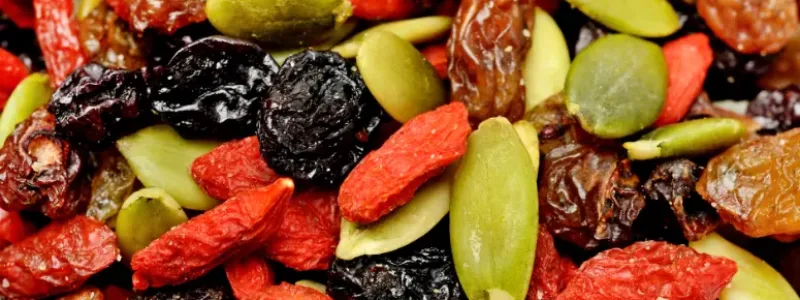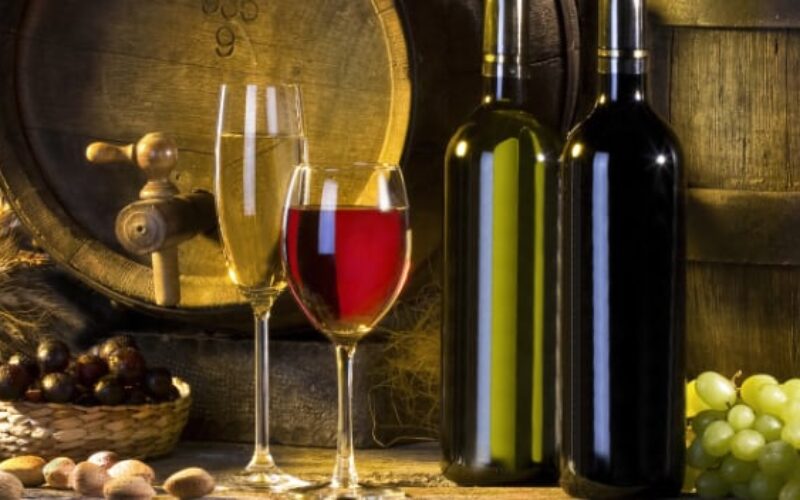Written By Sam Henselijn
Dried Fruits Explained
Dried Fruits have danced across the tongues and through the histories of cultures worldwide, offering not just a burst of sweetness but a bundle of health benefits too. They’re like nature’s own candy, available in a variety of tastes, textures, and colors. But what makes dried fruits special? Is it their convenience, their nutritional value, or perhaps the way they fit so seamlessly into our busy lives? Let’s dive deep into the vibrant world of dried fruits, exploring some of the varieties available, understanding their health benefits, and discovering creative ways to incorporate them into our daily diets.
What Are Dried Fruits?
Simply put, dried fruits are fruits from which most of the original water content has been removed through drying methods. The result? A smaller, energy-dense fruit with a longer shelf life. From the sun-drenched raisin to the exotic dried mango, each offers a unique flavor profile and nutritional benefits.
The Drying Process: From Fresh to Dried
The process of drying fruits is an ancient method of preservation that has been utilized by various cultures around the world for thousands of years. This timeless technique not only extends the shelf life of fruits but also concentrates their flavors, nutrients, and sugars, making them a convenient and delicious snack. Let’s explore the journey of fruit from its fresh state to its dried form, the benefits of this process, and a glimpse into its historical origins.
- Selection and Preparation: The first step involves selecting high-quality, ripe fruits for drying. These fruits are then cleaned and, depending on the type of fruit, peeled, pitted, or sliced to ensure even drying.
- Pre-treatment: Some fruits undergo pre-treatment processes to preserve color and enhance shelf-life. This can include blanching, dipping in ascorbic acid (vitamin C) solution, or applying sulfur dioxide. These steps help to inhibit enzyme activity that can lead to spoilage and discoloration.
- Drying: The core of the process involves removing most of the water content from the fruit, which is done through various methods:
Sun drying: This traditional method involves laying the fruit out in the sun on racks or mats. It’s suitable for hot, dry climates and is one of the oldest methods of drying.
Oven drying: For small batches, an oven can be used, with the fruit spread out on trays and dried at low temperatures for several hours.
- Dehydrators: These are specialized machines designed to evenly dry foods at low temperatures. Air circulates around the trays, ensuring consistent drying.
- Freeze-drying: A more modern method that involves freezing the fruit and then reducing the surrounding pressure to allow the frozen water in the fruit to sublimate directly from ice to vapor.
- Conditioning: After drying, fruits are sometimes conditioned. This step involves placing the dried fruits in a container for a few days to equalize the moisture among them and reduce the risk of mold growth.
- Packaging: Finally, the dried fruits are packaged and sealed to maintain their freshness and extend their shelf life. Proper packaging prevents exposure to moisture and air, which can lead to spoilage.
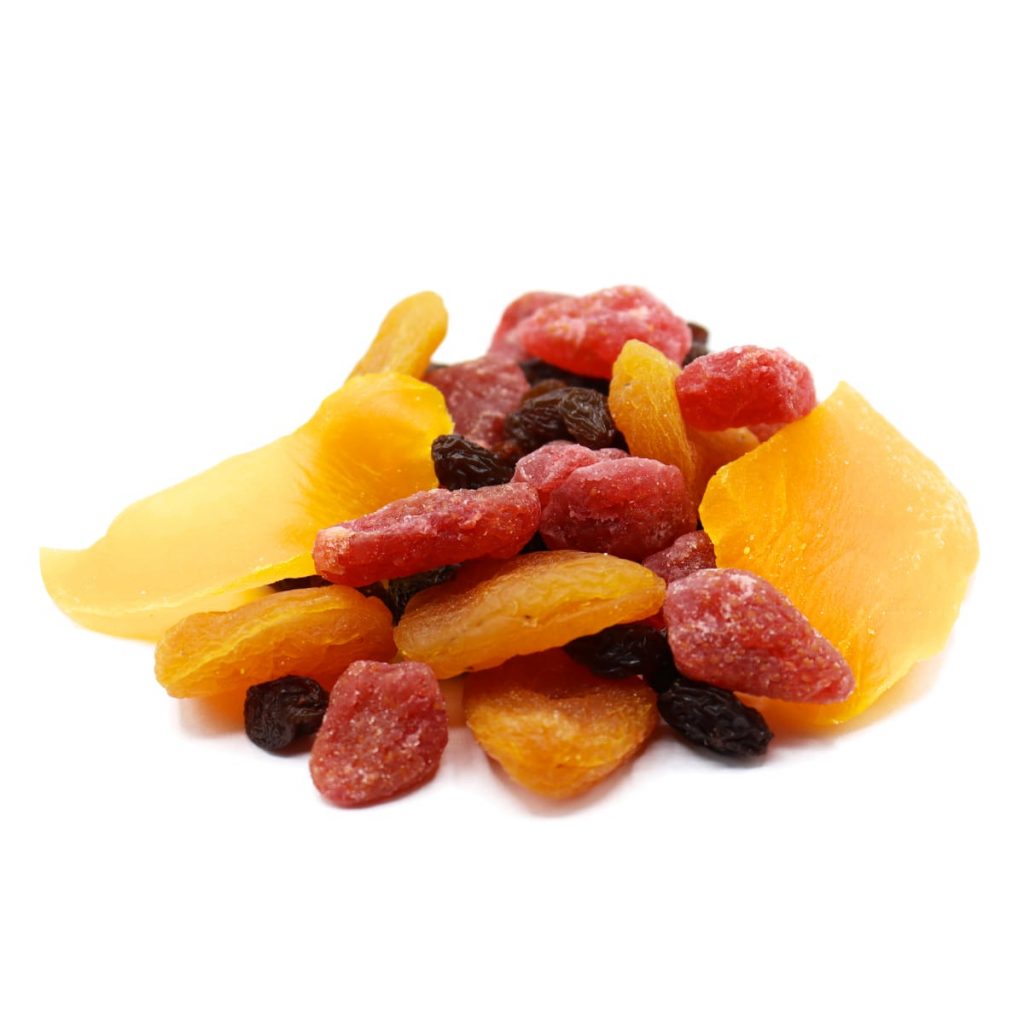
Benefits of Drying Fruits
- Preservation: Drying effectively extends the shelf life of fruits by reducing the water content, which inhibits the growth of bacteria, yeast, and molds.
- Convenience: Dried fruits are portable, lightweight, and do not require refrigeration, making them a convenient snack option.
- Nutrient Concentration: While the drying process reduces the vitamin C content, other nutrients become more concentrated per gram in dried fruits.
- Natural Sweetness: The drying process concentrates the fruit’s natural sugars, making them a healthier alternative to candy and other sweet snacks.
History of Drying Fruits
The practice of drying fruits dates back thousands of years, with origins traced to ancient civilizations across the Middle East, Asia, and the Mediterranean. It is believed that early humans discovered the preservation method by accident when fruits were left out in the sun and dried naturally. The Egyptians were known to dry fruits and vegetables for long journeys and storage in the tombs of pharaohs. Similarly, the Romans dried fruits like figs and grapes for their soldiers and travelers. As trade routes expanded, so did the exchange of dried fruit techniques, making it a staple preservation method across the world.
Some Dried Fruit Varieties
Raisins
Let’s start with a classic: raisins. These little sunbeams are nothing but dried grapes, but their nutritional profile is anything but small. Packed with fiber, vitamins, and minerals, they’re a sweet way to boost your health.
- Origin: Predominantly produced in the USA (California), Turkey, and Iran. These regions are ideal due to their hot, dry summers and mild winters.
- Appearance: Raisins are dried grapes that have a wrinkled texture and are small in size.
- Color and Shape: Their color can range from golden yellow (Golden Raisins) to dark brown (Sun-Dried Raisins). The shape is generally spherical but slightly flattened due to the drying process.
- Varieties and Sizes: There are several grape varieties used to make raisins, including Thompson Seedless, Flame Seedless, and Sultana. The size and taste can vary slightly depending on the grape variety and drying method.
Apricots
Dried apricots are a goldmine of nutrients, including beta-carotene and fiber. Their tangy sweetness and soft texture make them a favorite snack for many.
- Origin: Turkey is the leading producer of dried apricots, especially from the Malatya region, followed by Iran and Pakistan.
- Appearance: Dried apricots are usually halved and pitted before drying, retaining their distinctive shape.
- Color and Shape: The color ranges from bright orange to a darker, brownish-orange when treated with sulfur dioxide to preserve color, or naturally darker if untreated.
- Varieties and Sizes: The most common variety for drying is the Turkish Malatya apricot, known for its sweet flavor and soft texture. Sizes can vary, with larger apricots often halved and smaller ones sometimes dried whole.


Dates
Rich and caramel-like in flavor, dates are a powerhouse of energy. They’re also brimming with potassium and fiber, making them an excellent snack for an instant energy boost.
- Origin: Major producers include Egypt, Saudi Arabia, Iran, Tunisia, and the United Arab Emirates. Dates thrive in arid, desert climates.
- Appearance: Dates are elongated and have a chewy texture when dried.
- Color and Shape: The color can vary from light brown to almost black, depending on the variety and level of ripeness when dried.
- Varieties and Sizes: There are hundreds of date varieties, but Medjool and Deglet Noor are among the most popular for drying. Medjool dates are larger and sweeter, while Deglet Noor dates are smaller and have a more subtle sweetness.
Figs
Dried figs are like a hug in fruit form: comforting and sweet. They offer a wealth of nutrients, including calcium, iron, and potassium, making them a smart addition to any diet.
- Origin: Turkey (especially the Aegean region), Greece, and California are known for their production of dried figs.
- Appearance: Dried figs maintain their unique teardrop shape, with a slightly flattened appearance from the drying process.
- Color and Shape: They range in color from pale yellow to dark purple. The inside is filled with tiny, edible seeds.
- Varieties and Sizes: The most common variety for drying is the Turkish Smyrna fig, known for its large size and sweet taste. Calimyrna figs, popular in the US, are another variety known for their nutty flavor.
Mangoes
Dried mangoes bring the tropics straight to your taste buds. They are not only delicious but also rich in vitamins A and C, aiding in immune system support and eye health.
- Origin: India, Thailand, and the Philippines are significant producers of dried mangoes, with each region offering distinct flavors.
- Appearance: Dried mangoes are typically sliced into strips or pieces that are chewy and flexible.
- Color and Shape: They exhibit a vibrant yellow to orange color, indicative of their tropical origin.
- Varieties and Sizes: There are many mango varieties, but the most favored for drying tend to be those that are sweet and less fibrous. The size and shape of the dried pieces can vary greatly depending on how they are cut before drying.
Pears
Dried pears are a real treat. They’re sweet, a bit chewy, and have a unique flavor. They’re great for snacking or adding to desserts. Recipe: Try this Gourmet Pear and Walnut Salad.
- Origin: Dried pears are often produced in countries like the USA, specifically in regions known for pear cultivation such as Oregon and Washington state.
- Appearance: They usually retain the pear shape but are sliced before drying, resulting in thin, soft pieces.
- Color and Shape: The color ranges from light tan to a golden brown, with a soft, pliable texture.
- Varieties: There are various pear varieties used for drying, including Bartlett and D’Anjou, each offering a slightly different flavor profile.
Pineapple
Dried pineapple is like a burst of sunshine in your mouth! It’s sweet, tangy, and perfect for a tropical twist on your snack time.
- Origin: Thailand and the Philippines are among the leading producers of dried pineapple, thanks to their tropical climates.
- Appearance: Dried pineapple is typically cut into rings or chunks before drying.
- Color and Shape: It has a vibrant yellow to golden color, with a chewy texture.
- Varieties: While there are many varieties of pineapple, the sweeter varieties like MD2 are often chosen for drying.
Papaya
Dried papaya chunks are colorful and full of sweet, tropical flavor. They’re a great way to add some brightness to your day.
- Origin: Dried papaya is mainly produced in tropical countries where papaya trees flourish, such as Brazil, Mexico, and India.
- Appearance: It’s commonly found in spears or dice.
- Color and Shape: The color is bright orange to yellow, maintaining some of the fruit’s original texture.
- Varieties: The two main types of papaya are Hawaiian and Mexican, with the former being more common for drying due to its sweetness.
Blueberries
Dried blueberries are little bursts of antioxidants. They’re super sweet and perfect for mixing into granola or yogurt. A Treat: Milk Chocolate Covered Blueberries
- Origin: The United States, particularly Maine, and Michigan are large producers of dried blueberries.
- Appearance: Small, round, and slightly shriveled after the drying process.
- Color and Shape: They are deep blue to purple-black, retaining much of their original berry shape.
- Varieties: Highbush blueberries are most commonly used for drying due to their size and sweetness.
Cranberries
Dried cranberries are tangy and sweet. They’re often added to salads, baked goods, or eaten by the handful as a snack.
- Origin: The USA and Canada are the main producers of dried cranberries, with Massachusetts and Wisconsin leading in the US.
- Appearance: They are usually halved or whole when dried, with a slightly flattened shape.
- Color and Shape: Dried cranberries have a deep red to burgundy color.
- Varieties: The most common variety used for drying is the large, tart North American cranberry.
Goji Berries
Goji berries are a superfood, packed with vitamins, minerals, and antioxidants. Dried goji berries have a slightly tart and sweet taste, making them a great addition to your diet for a health boost.
- Origin: Goji berries are primarily grown in China, specifically in the Ningxia and Xinjiang regions.
- Appearance: They are small, about the size of a raisin, and oblong-shaped.
- Color and Shape: Dried goji berries have a vibrant red-to-orange color.
- Varieties: There are several varieties, but the most cultivated for drying is the Lycium barbarum.
Dried Strawberries
- Origin: Primarily produced in countries like the USA and Turkey, where strawberries are abundantly grown.
- Appearance: They are often sliced or halved before drying, resulting in a chewy texture.
- Color and Shape: Dried strawberries exhibit a deep red color, maintaining a resemblance to their fresh form but in a more condensed size.
- Varieties and Sizes: There are many varieties of strawberries, but those with a higher sugar content are preferred for drying, enhancing their natural sweetness.


Dried Kiwi
- Origin: Dried kiwi is produced in countries with a kiwi cultivation tradition, such as New Zealand, Italy, and China.
- Appearance: Usually sliced into rounds before drying, resulting in a chewy, slightly tart snack.
- Color and Shape: Dried kiwi retains its bright green color, with some varieties also showing a hint of the fruit’s central white area and black seeds.
- Varieties and Sizes: Hayward is the most common variety for drying due to its sweetness and size.


Creative Culinary Uses of Dried Fruits
Dried fruits are incredibly versatile in the kitchen. Here are some creative ways to include them in your daily diet:
Boost Your Breakfast
Sprinkle dried fruits on your cereal, yogurt, or oatmeal for a burst of natural sweetness and a nutritional boost to start your day.
Snack Smarter
Instead of reaching for chips or candy, keep a stash of mixed dried fruits for a healthier snack option. They’re portable and convenient, making them perfect for on-the-go snacking.
Enhance Your Salads
Add some dried cranberries or cherries to your salads for a touch of sweetness and texture. They pair wonderfully with leafy greens and vinaigrette dressings.
Bake Better
Incorporate dried fruits into your baking for added flavor and nutrition value. They can be used in muffins, bread, and cookies, offering a sweet and chewy contrast to your baked goods.
Create Delicious Dishes
Dried fruits can add a unique flavor to savory dishes as well. Try adding them to rice pilafs, couscous dishes, or even stews for a hint of sweetness and depth of flavor.
Summing Up The Dried Fruits Explained Guide
The world of dried fruits is vast and varied, filled with delicious options that can enrich our diets and tantalize our taste buds. Each of these dried fruits brings its own unique set of flavors to the table. Beyond their convenience and taste, dried fruits offer a host of health benefits, from boosting our intake of vitamins and minerals to providing our bodies with much-needed fiber and antioxidants. By incorporating dried fruits into our daily diets, we can enjoy their many benefits in a fun and flavorful way.
So the next time you’re looking for a nutritious snack or a way to spice up your meals, at the store or online right now at LorentaNuts.com, consider reaching for some dried fruit. Your taste buds and your body will thank you!
Sam Henselijn Author’s Biography – Meet L’Orenta Nuts CEO
Copyright 2024 L’Orenta Nuts
L’Orenta Nuts proudly holds the SQF food safety certification, symbolizing our unwavering dedication to upholding the highest standards of food safety and quality. This certification guarantees that our products undergo rigorous scrutiny, ensuring transparency, traceability, and adherence to global food safety regulations for the utmost consumer confidence.
L’Orenta Nuts has the HACCP (Hazard Analysis and Critical Control Points) certification is a systematic approach to identifying, evaluating, and controlling food safety hazards. It ensures that food products are produced and handled in a manner that minimizes risks and complies with safety standards.
Our GMP (Good Manufacturing Practices) certification ensures that a manufacturing facility adheres to comprehensive quality and safety standards while producing pharmaceuticals, food, and other consumer goods, promoting consistency, quality, and compliance with regulatory requirements.
L’Orenta is an FDA-approved manufacturing facility and has met the rigorous standards set by the U.S. Food and Drug Administration. It demonstrates compliance with regulations, ensuring the production of safe and high-quality food products.


